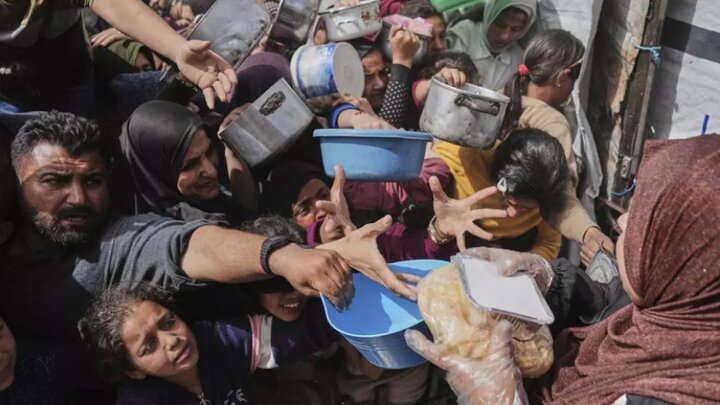
TEHRAN-- The use of Persian carpets in papal funeral service procedures may look like a surprising choicethat is, to those uninformed of the long history of carpets from the Islamic world in Christian contexts.A field of flowers surrounded Pope Franciss basic wooden coffin in St Peters Basilica this week.
The detailed pattern, woven in shades of crimson, indigo, and orange, does not belong to an Italian artistic tradition.
This intricate carpet, the second of 3 utilized in the papal funeral proceedings, comes from northwest Iran, The Art Newspaper reports, Mehr News Agency wrote.By placing Persian carpets underneath Pope Franciss coffin in his private chapel and after that in St Peters, and for his funeral in St Peters square on April 26, the Catholic Church is following a custom spanning over six hundred years.
How, one may wonder, did the visual language of carpets, neither Italian nor from a Christian tradition, pertained to symbolize holy ground in the most sanctified of Catholic rituals?From the late 14th century on, carpets imported from Anatolia (and later on the Levant, Egypt, and Iran) were the most valuable flooring money might purchase.
Their special status is testified by their depiction in spiritual paintings, where such carpets typically appear at the feet of the Virgin Mary or other crucial Christian figures.
Among the earliest examples is The Marriage of the Virgin by Niccol di Buonaccorso, painted in Siena around 1380 (and included in the exhibit Siena: the increase of painting at the National Gallery in London).
In it, a striking carpet with a style of faced animals demarcates the exalted zone within which the wedding event of Mary and Joseph occurs.
A carefully associated carpet, now in the Metropolitan Museum of Art, was found in the 1990s, likely an item of the Ilkhanid Empires western domains.Andrea del Verrocchio utilized an Anatolian carpet in a similar way for his depiction of the Virgin and Child flanked by John the Baptist and the bishop Donato de Medici (known as the Piazza Madonna), completed in 1486.
The carpet, an Ottoman style of which lots of examples make it through, produces a privileged area in which the Madonna reposes.
The relative distance of the two other figures to the Virgin and Child is suggested by their placing within the carpet.
While St John steps his whole foot onto the carpets border, Donato de Medici encroaches on the space with just the edge of one toe.In the 16th century, carpets from Islamic lands reached Europe in growing numbers, getting here as trade products, direct commissions, and in some cases, for the extremely finest examples, diplomatic presents.
Carpets from Ottoman lands dominated the sell the 16th century.
Safavid Iran and later Mughal India joined the market in the 17th.
Using carpets as diplomatic presents continues to this day.
In 2016, when the Iranian President Hassan Rouhani consulted with Pope Francis at the Vatican, he brought with him a small carpet woven in Qom as a gift for the pontiff.The three carpets seen in Franciss funeral service proceedings operate in similar method as the carpets in the paintings.
They signal holy ground, a sanctified space with distinct borders that separate the pontiff from attendants and visitors around him.
In the more intimate space of the personal chapel, two members of the Swiss Guard stood flanking the coffin on the carpets border, echoing the gesture of John the Baptist in Verrocchios Piazza Madonna.
In St Peters, for the general public watching, the bigger carpets borders and the sanctified zone they include were strengthened by stanchions.Another Persian carpet was spread under Pope Franciss casket for his funeral mass in St Peters Square.
It was a Heriz carpet, again from northwest Iran, and appears to be the very same one utilized for the previous two papal funerals; for Pope John Paul II in 2005 and Pope Emeritus Benedict XVI in 2023.
Modifications enacted by Francis in late 2024 eschew much of the pomp and scenario of previous papal funeral services, like the raised biers used by his predecessors in St Peters Basilica and the three different caskets of cypress, lead, and oak.
Considering this, the inclusion of the carpets holds particular significance.
As Francis depends on a basic wooden coffin placed low to the carpet, the image of holy ground comes vividly to the fore.KD.
This short article first appeared/also appeared in Tehran Times

 16
16















